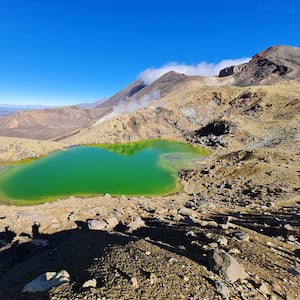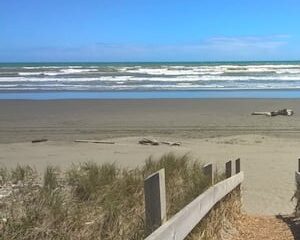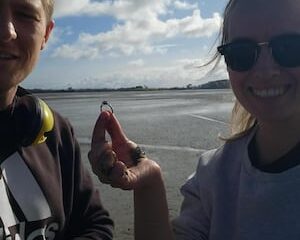Politics
Foreign Tourists to Pay New Fees for Popular NZ Conservation Sites

Foreign tourists visiting some of New Zealand’s most renowned Department of Conservation (DoC) sites will soon be required to pay a fee ranging from $20 to $40. Prime Minister Christopher Luxon announced this initiative during the National Party conference held in Christchurch on October 15, 2023. The charge will initially apply to popular locations, including Cathedral Cove/Te Whanganui-a-Hei, the Tongariro Crossing, the Milford Track, and Aoraki Mt Cook. These destinations are significant draws for tourists, with foreign visitors accounting for approximately 80 percent of all foot traffic at these sites, according to Conservation Minister Tama Potaka.
The new fees are part of a broader strategy to ensure that international tourists contribute to the maintenance and preservation of these iconic landscapes. Luxon emphasized the importance of tourism for New Zealand’s economy, stating, “Tourists make a massive contribution to our economy, and no one wants that to change.” He further expressed that many international visitors have been surprised at the lack of charges to access some of the world’s most stunning natural locations.
Luxon stated, “It’s only fair that at these special locations, foreign visitors make an additional contribution of between $20 and $40 per person.” This move is seen as a step towards balancing the benefits of tourism with the need for sustainable practices in preserving the country’s natural beauty.
Fee Implementation and Visitor Impact
The fees are expected to be implemented by the end of 2023, with further details regarding the payment process to be announced. The New Zealand government anticipates that the additional revenue generated will help support conservation efforts and infrastructure improvements at these popular sites.
Critics of the initiative have raised concerns about the potential impact on tourism, especially as the country continues to recover from the effects of the COVID-19 pandemic. In 2022, New Zealand’s tourism sector saw a gradual resurgence, with international arrivals slowly increasing. Implementing fees may deter some foreign tourists, particularly those on a budget, but proponents argue that the long-term benefits to conservation and infrastructure will outweigh any immediate downturn.
Broader Context of Tourism in New Zealand
The announcement comes amidst a growing global trend of charging entrance fees to national parks and protected areas. Countries around the world have increasingly recognised the need to manage visitor numbers and secure funding for conservation efforts through user fees. This practice not only helps maintain the sites but also ensures that they remain accessible and preserved for future generations.
New Zealand’s stunning landscapes and unique biodiversity attract millions of visitors each year, making tourism one of the country’s vital economic sectors. The government’s decision to implement these fees reflects a commitment to sustainable tourism practices while ensuring that international visitors contribute fairly to the upkeep of the country’s natural heritage.
As New Zealand moves forward with these changes, the balance between welcoming tourists and preserving its iconic landscapes will be a key focus for local authorities and conservationists alike.
-

 Sports5 days ago
Sports5 days agoRichie Mo’unga’s All Blacks Return Faces Eligibility Hurdles
-

 World2 days ago
World2 days agoFatal ATV Crash Claims Life on Foxton Beach
-

 Sports1 week ago
Sports1 week agoSouth Africa Elects to Bowl First in Tri-Series Final Against NZ
-

 World3 days ago
World3 days agoPolice Arrest Multiple Individuals During Funeral for Zain Taikato-Fox
-

 Politics3 weeks ago
Politics3 weeks agoDavid Seymour Proposes Fast-Track Law for New Supermarkets in NZ
-

 Entertainment3 weeks ago
Entertainment3 weeks agoGeorge Calombaris Opens Up About Alcohol Struggles After Scandals
-

 World3 weeks ago
World3 weeks agoDaughter Accused of Murdering Mother in Khandallah Home
-

 Top Stories3 weeks ago
Top Stories3 weeks agoTragic Crash Claims Three Lives on Masters Rd Near Waiuku
-

 World3 weeks ago
World3 weeks agoDriver High on Magic Mushrooms Crashes with Child in Car
-

 World3 weeks ago
World3 weeks agoCoalition Leaders Address UN Rapporteur’s Criticism, Clarify Response
-

 Health3 weeks ago
Health3 weeks agoWoman’s Missing Engagement Ring Found in Waiuku Mudflats
-

 Top Stories3 weeks ago
Top Stories3 weeks agoTauranga Airline Suspended After Safety Concerns Arise

















